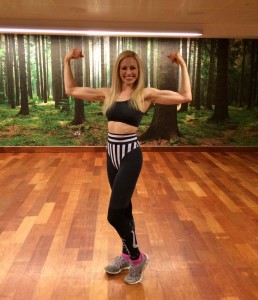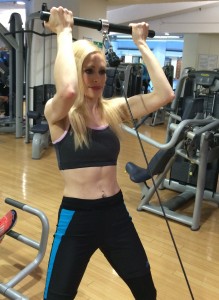We kicked off looking at the great benefits of great technique with how to get more out of rowing. Let’s now move from a CV machine to a resistance pulley, and one popular exercise with often dubious practices: the bicep curl.
Be it dumbbells, barbells or resistance machines, the bicep curl is the big boys’ toy. Nothing apparently looks sexier than a man flexing his biceps lifting the weight of a small tank. It appeals to the primordial in both sexes.
Unfortunately, because it is so fundamentally associated with masculinity, virility and strength, two things can happen: men cheat, and women don’t do it enough. The result is either injury, ineffectiveness or bat wings. Worse, there is the nerve-jangling racket of the weight stack being crashed as strength or know-how plummets.
Fortunately, the curl is an extremely effective exercise for toning and strengthening the biceps when performed properly. And ladies, this doesn’t mean you could develop the physique of Arnie: you simply don’t have enough natural testosterone. What it can mean is lean, toned and strong arms that are beautiful, a benefit in everyday life, and the bonus of an exercise that itself helps stave off osteoporosis.
So, what should you do – and what shouldn’t you do? Firstly, work out the weight that is applicable to your goals and insert the pin accordingly. Secondly, grasp the bar properly, and this involves a deadlift. The beauty of this is the buttocks, upper legs and spinal muscles get a minor workout before and after the biceps take over.
Stand facing the low pulley with the feet hip-width apart. Bend the knees and hips to adopt a ‘get set’ position with the arms straight. Ensure the knees are in line with the feet, and not in front of them. Keep the stomach muscles braced and the back in its naturally straight (“neutral”) position. Grasp the barbell with an underhand grip.
Slowly stand fully upright, pushing up through the shoulders and keeping the barbell close to the body. Don’t lock out the legs, lean back, or bend forward when lifting the barbell as this puts pressure on the knee and back joints. Stand as close to the machine as possible so the cable is nearly vertical and widen the stance. Fix the upper arms into the sides of the body.
Curl the bar towards the chest in a controlled smooth movement. Don’t swing or jerk the weights up with Hulk-like fervour as it could result in spinal trouble from leaning back too far or muscular tears from lifting weights beyond the body’s capability. Also avoid excess wrist movement, and keep those upper arms pinned into the sides of the body. The elbow joint should act as a fixed pivot throughout.
Lower the bar under control until the arms are straight, but not locked out to avoid joint strain, and don’t let the weight touch the stack, let alone drop like a drum kit down a lift shaft. Repeat the exercise, keeping the movement smooth and continuous.
If the weight cannot be lowered in a safe, controlled manner and you are training alone, consider reducing the weight or number of reps. The effectiveness of this exercise lies at least as much in the lowering phase as the lifting.
To finish, narrow the stance to hip-width and return the bar to the floor by bending the knees and hips, and keeping the back neutral.
The point to remember is your elbow is a pivot. Keep your upper arms fixed by your sides.
Curls: the super, safe and savvy way to beautiful biceps.




Comments are closed.